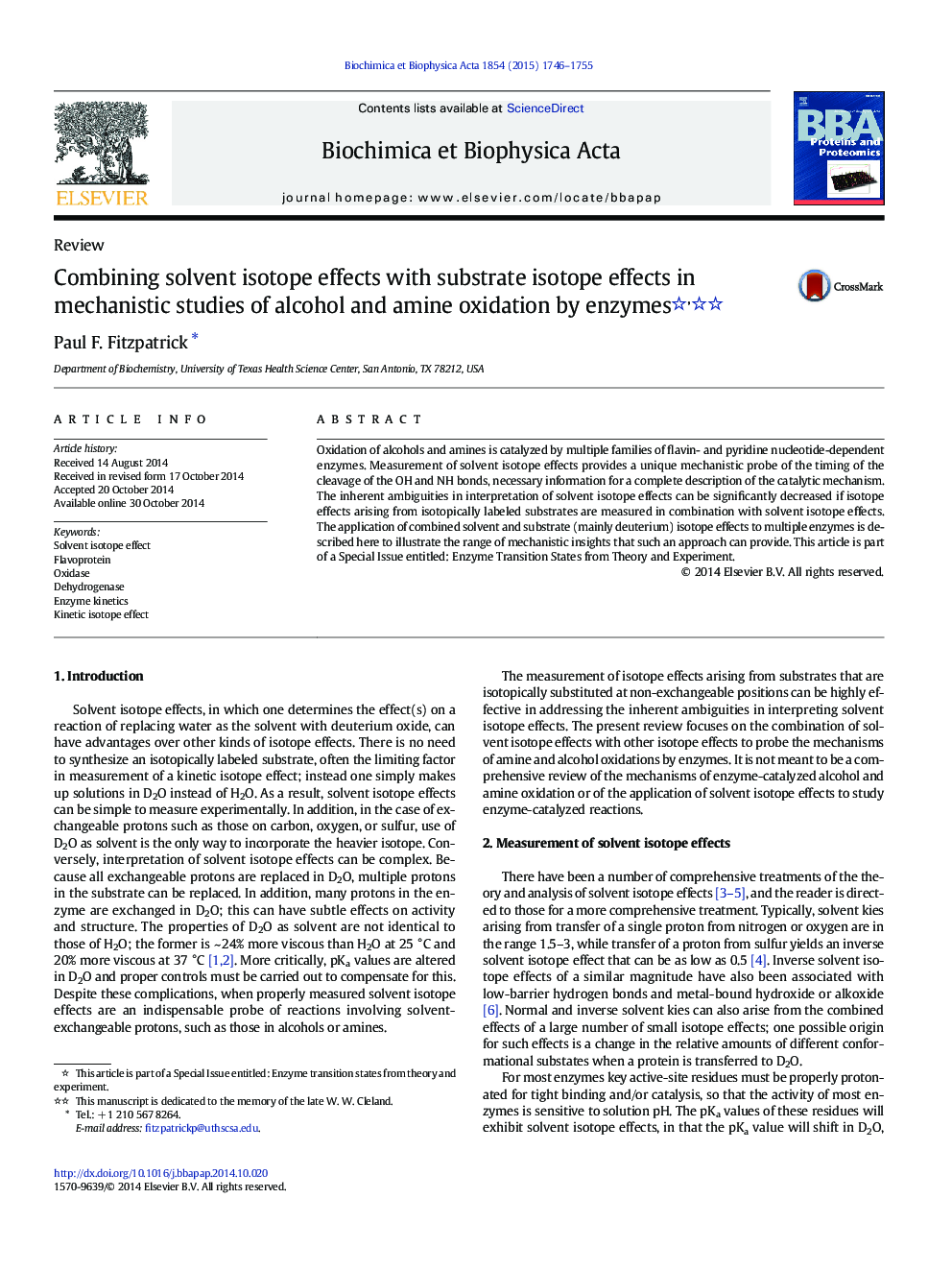| کد مقاله | کد نشریه | سال انتشار | مقاله انگلیسی | نسخه تمام متن |
|---|---|---|---|---|
| 1178281 | 962679 | 2015 | 10 صفحه PDF | دانلود رایگان |
• Oxidation of an amine or alcohol requires removal of a solvent-exchangeable proton.
• Solvent isotope effects can be used to probe the timing of NH and OH bond cleavages.
• Combining solvent and substrate isotope effects helps define the origin of the solvent effect.
• Alcohol oxidation typically involves hydride transfer from an alkoxide.
• Amine oxidation typically involves hydride transfer from the neutral amine.
Oxidation of alcohols and amines is catalyzed by multiple families of flavin- and pyridine nucleotide-dependent enzymes. Measurement of solvent isotope effects provides a unique mechanistic probe of the timing of the cleavage of the OH and NH bonds, necessary information for a complete description of the catalytic mechanism. The inherent ambiguities in interpretation of solvent isotope effects can be significantly decreased if isotope effects arising from isotopically labeled substrates are measured in combination with solvent isotope effects. The application of combined solvent and substrate (mainly deuterium) isotope effects to multiple enzymes is described here to illustrate the range of mechanistic insights that such an approach can provide. This article is part of a Special Issue entitled: Enzyme Transition States from Theory and Experiment.
Figure optionsDownload high-quality image (136 K)Download as PowerPoint slide
Journal: Biochimica et Biophysica Acta (BBA) - Proteins and Proteomics - Volume 1854, Issue 11, November 2015, Pages 1746–1755
